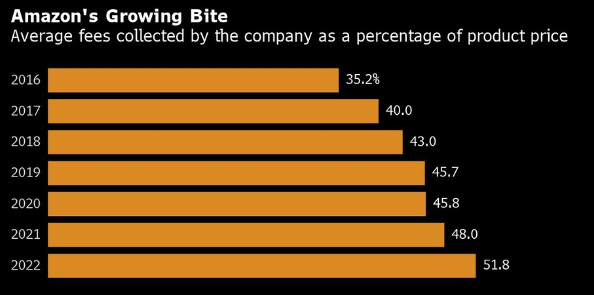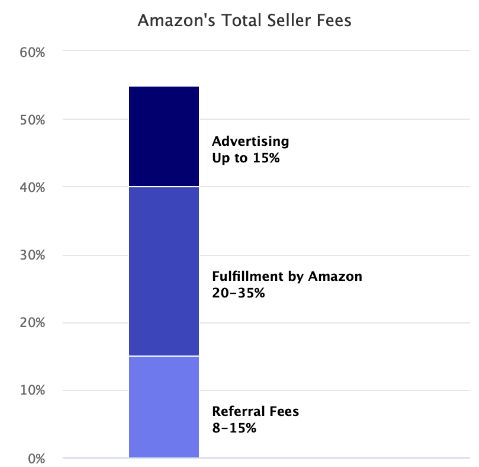YCD news —According to data released by the statistics agency Marketplace Pulse, Amazon charges a higher percentage of sellers’ sales year by year, breaking the 50% mark for the first time in 2022.

Generally Amazon sellers need to pay a 15% transaction fee (Amazon calls it a referral fee), Amazon fulfillment transaction fees (including storage and other fees), as well as advertising and promotional costs on Amazon. Specific fee charges vary depending on product category, product price, size, weight, and the seller’s business model.
The 15% transaction fee has remained unchanged for more than a decade, and this percentage varies by category and can be as low as 8%.
But Amazon’s FBA fees have been steadily increasing. Every year, Amazon raises delivery fees and increases storage fees. Because there are many inconveniences if you want to sell goods on Amazon without FBA, most sellers choose to use FBA, and this is the source of the bottom of Amazon’s sitting price.
Although Amazon has not set a specific advertising prices, but as more and more sellers began to advertise, competition has become more intense, advertising costs have also gone up.
And, Amazon advertising is also very important, because most of the best converting areas are allocated to advertising. Therefore, sellers must advertise in order to have a chance of being found by consumers.
While many small sellers spend less than 5% of their sales on advertising, some private label sellers are so focused on brand promotion that they often spend more than 10% on advertising.

However, it is not possible to compare Amazon directly with shopping platforms such as Walmart and eBay or Shopify just by these expenses. Because, although Walmart’s fees are cheaper than Amazon, it also has an order of magnitude smaller number of users than Amazon, so sellers can only partially replace Amazon with Walmart.
Direct-to-consumer through platforms such as Shopify, on the other hand, is a fundamentally different business model, so fees are not the only consideration.
Due to rising costs, many sellers are the end of the year accounting for profits only to find that the bulk of Amazon ate, in addition, sellers also need to pay inventory, shipping, staff wages and a variety of other expenses, the final count may just break even.
To change this situation, sellers either raise prices, or to diversify and reduce reliance on Amazon, or rely on the platform alone a road will be a lot of restrictions.
